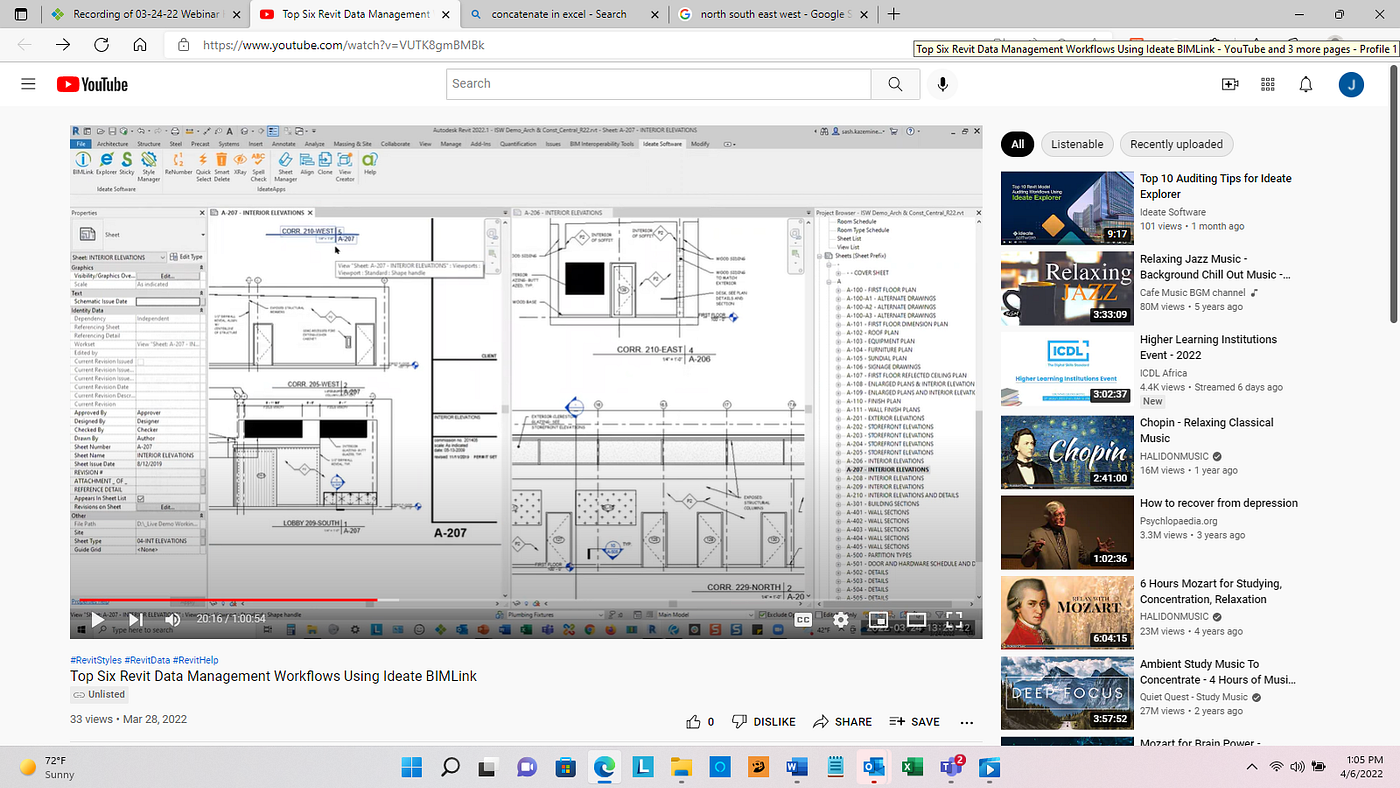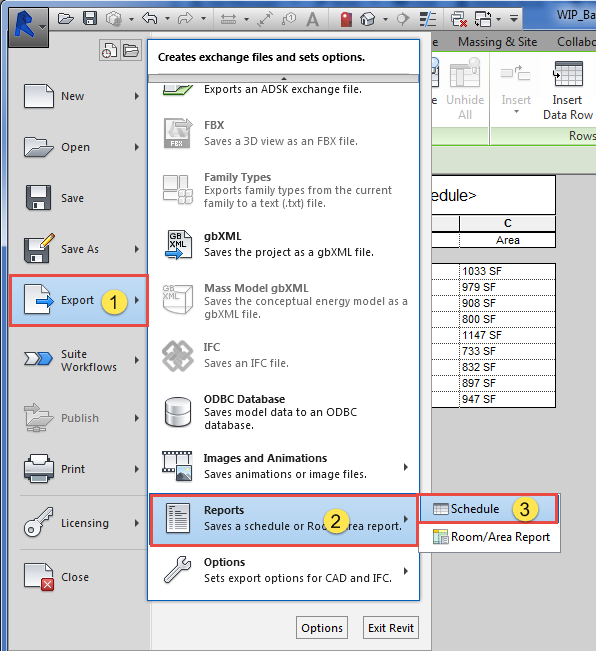Revit Add Ins: Increasing Your Style Capabilities
Wiki Article
Excel-to-Revit: A Game-Changing Process for Architectural Layout - Unveiling the Tricks
Are you tired of costs hours on building style? Look no more! Introducing excel-to-revit, the game-changing process that will revolutionize your layout procedure. With excel-to-revit assimilation, you can streamline your architectural layout, unlock performance, and take full advantage of cooperation within your team. In this article, we will certainly reveal the secrets of this effective device, showing you how it can transform your style projects. Prepare yourself to take your architectural style to the following level with excel-to-revit!The Power of Excel-to-Revit Assimilation

Picture the ease of having the ability to edit and upgrade job data in Excel, and quickly see those adjustments mirrored in your Revit model. Say goodbye to hands-on data access or tedious updates. With Excel-to-Revit combination, you can conserve time and decrease errors by leveraging the power of Excel's solutions and functions to immediately create precise information in Revit.
Not only does this assimilation boost efficiency, but it likewise improves partnership among team members. You can quickly share Excel documents with colleagues, who can after that import the data into their Revit versions. This promotes a smooth exchange of info and ensures that everyone is collaborating with the most updated data.

Simplifying Architectural Design With Excel-To-Revit
Improving architectural layout is made simpler with the usage of Excel-to-Revit (revit tools). With this powerful combination, you can enhance your process and conserve valuable time throughout the style procedure. By leveraging the capabilities of Excel and Revit, you can perfectly transfer information between the two platforms, eliminating the need for manual information entrance and lowering the danger of errorsExcel-to-Revit permits you to import and export data easily, allowing you to easily update and customize your architectural designs. You can produce timetables, compute amounts, and produce records in Excel, and then move that data directly right into your Revit model. This assimilation makes sure that your design details is always current and integrated, removing the demand for manual updates and lowering the possibilities of inconsistencies.
By utilizing Excel-to-Revit, you can also make the most of the powerful computational capabilities of Excel. You can execute complex calculations, evaluate information, and automate repetitive tasks, all within Excel. With simply a few clicks, you can import the outcomes back into Revit, allowing you to make enlightened design decisions and optimize your building layouts.
Unlocking Effectiveness: Discovering the Excel-to-Revit Operations
Maximize your efficiency by flawlessly integrating Excel and Revit for a more efficient process. With the Excel-to-Revit workflow, you can unlock an entire brand-new degree of effectiveness in your architectural design procedure. By utilizing the power of Excel's information administration abilities and integrating it with the adaptability and precision of Revit, you can streamline your layout process and save beneficial time.One of the key benefits of this assimilation is the ability to import and export information in between Excel and Revit. This implies that you can quickly move job info, such as area routines or material amounts, from one software to the various other, removing the need for manual data entry and decreasing the opportunities of errors. You can additionally produce custom-made solutions and calculations in Excel to automate repeated tasks and execute complicated calculations, which can after that be perfectly incorporated into your Revit versions.
Additionally, the Excel-to-Revit workflow enables better coordination and collaboration in between staff member. With Excel working as a central data center, several employee can deal with various aspects of the job simultaneously, sharing and upgrading details in real-time. This not just improves communication but also ensures that everybody is working with one of the most updated information, eliminating the risk of inconsistencies.
Taking Full Advantage Of Partnership: Excel-to-Revit for Architectural Teams
By flawlessly incorporating Excel and Revit, building teams can substantially improve cooperation and achieve a lot more reliable style results. When utilizing this effective workflow, you can quickly transfer data in between Excel spread sheets and Revit versions, enhancing the design procedure and enhancing interaction amongst team participants. With Excel-to-Revit combination, you can easily import job data, such as space routines, material amounts, and project parameters, straight right into Revit, removing the demand for manual information entry and reducing the chances of errors. This smooth link enables for real-time updates, making certain that every person is dealing with one of the most current details and staying clear of inconsistencies in between different documents.In addition, by leveraging Excel's effective computation abilities, you can do complicated computations and evaluation on your layout data, supplying important understandings imp source and driving educated decision-making. This combination also enables you to export data from Revit to Excel, enabling a fantastic read you to develop comprehensive reports, charts, and graphs for discussions and evaluation. This collective process advertises effective communication and control among staff member, as Excel serves as a main center for data monitoring and sharing.
Total, by welcoming the Excel-to-Revit workflow, building groups can attain greater levels of cooperation, performance, and accuracy in their style procedure. revit tool. This assimilation encourages groups to interact seamlessly, ensuring that everyone is on the exact same page and adding to the success of the project
Introducing the Secrets of Excel-to-Revit Combination

Among the secrets of Excel-to-Revit integration is the ability to leverage the power of solutions and computations in Excel to drive criteria and produce complex geometries in Revit. You can link Excel spread sheets to Revit households, permitting you to input data straight into the spread sheet and have it automatically upgrade in the Revit version. This enhances the style process and makes sure accuracy and consistency across the task.
One more secret is the capability to develop custom routines and records in Excel, using data drawn out from Revit. This enables you to analyze and envision job details in such a way that is not possible within Revit alone. You can quickly produce quantity liftoffs, price estimates, and job timelines, giving beneficial understandings for decision-making and job monitoring.
In addition, Excel-to-Revit assimilation allows efficient partnership amongst staff member. Several users can work on the exact same Excel webpage spreadsheet simultaneously, making it simpler to collaborate and track adjustments. You can also use Excel's commenting attribute to provide responses or interact design modifications.
Conclusion
By incorporating the power of Excel and Revit, architects can currently function a lot more effectively, save time, and generate better styles. Beginning including excel-to-revit combination into your architectural design process today and change the means you work.With just a few clicks, you can import the results back into Revit, permitting you to make educated layout decisions and enhance your building styles.
By using the power of Excel's information monitoring capacities and integrating it with the adaptability and precision of Revit, you can streamline your layout procedure and conserve valuable time.
By effortlessly integrating Excel and Revit, building groups can significantly improve partnership and accomplish much more reliable layout outcomes. When utilizing this powerful operations, you can quickly transfer information between Excel spread sheets and Revit designs, simplifying the style procedure and improving communication among group participants.Additionally, by leveraging Excel's effective calculation capabilities, you can execute complex computations and analysis on your layout data, providing important understandings and driving notified decision-making.
Report this wiki page